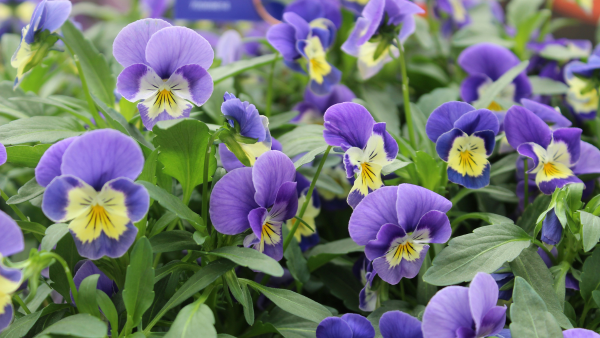We ran a survey and asked our valued customers to submit their top tips for successfully sowing and growing peas & beans. Some have been featured in our catalogues but we thought we would publish these online to allow other growers to benefit...
We must add that we haven't tried all of the hints and tips below but it may offer some insights to how other growers approach sowing and growing their peas & beans!
- Sow them thickly. If it has just rained without soaking. Dig a trench a spade deep half fill with well-rotted manure or compost scatter in peas, water, fill trench with shop compost stake as soon as they come through with Hazel 5ft twigs. Water if dry to avoid mildew.
- I tend to start them off indoors on damp kitchen paper towel and what for signs of germination before planting out.
- Make sure your pea netting is firmly fixed in place & strong enough to hold a heavy crop - ever hopeful!
- If you have no means of protecting plants, delay sowing seeds of French Beans until the soil temperature is suitable. They usually catch up anyway.
- I always start peas and beans in Root Trainers in a cold greenhouse. Water the seeds well but infrequently to stop the seed rotting. I open up the one of the modules before watering to confirm that watering is needed.
- Run the rows east to south and dust with a year-old soot.
- Start them indoors and sow extra as you start to plant in case of slugs or birds. Netting is useful. My mother in law uses a climbing rose arch for her beans (she likes to grow Borlotti). Rotate them around your plot because they help replenish the soil. They do better in a wet season.
- Grow tall varieties in a big tub with a wire obelisk to keep them out of the wind. Grow small varieties in a self-watering window box - they're easy to harvest and out of the wind.
- To grow the best crop of peas. Dig a trench about 20cm deep and the same wide, line it with newspaper, grass clippings or cardboard, in fact anything that will conserve moisture, back fill the trench, then plant your peas along the trench in the usual way, (exhibition growers will have sown them in 3 inch pots in the green house) form your pea frame above them with canes starting at the ends, put two canes in, upright each side of the trench then bend them together and join with string at the top, repeat at the other end of the trench, now you can put the ridge cane across the top, finally, put the rest of the cane pairs in place and secure to the ridge cane. this method makes a much neater job and makes the whole job easy peasy. Each plant has enough space, air and moisture without the dreaded mildew.
- Sow them on wigwams around a shallow bowl made in the middle of the wigwam. this way i can tip on copious amounts of water without it running away.
- Grow flowering plants attractive to pollinators (bees etc) near your peas and beans to encourage pollination.
- Always surround your runner beans with grass clippings. It helps to keep their roots moist as well as giving them a nitrogen boost!
- Soak pea seeds for about 24 hours before sowing. Dig your trench about 15cm wide, 7.5 cms deep. Mix the soaked seeds into a bucket of garden compost thoroughly, then let the mix go into the trench. It will give the seeds a fresh disease bed to lie in. It also reduced=s the risks of pea thrips & similar from attacking the small seedlings.
- Dust slightly dampened seeds with Cinnamon powder before sowing. Works quite well in stopping fungal seed rot.
- Dwarf beans take longer to sprout so plant them earlier or 'chit' them in a plastic box (ice cream container?) on wet kitchen roll with the lid on and indoors. Plant as soon as root shows.













